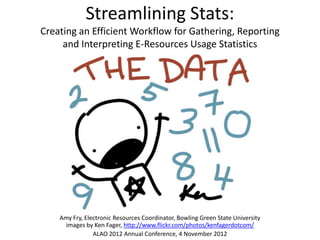The document discusses streamlining the workflow for gathering, reporting, and interpreting usage statistics of e-resources at Bowling Green State University, emphasizing data control, organization, and distribution of labor. It provides insights into standards like COUNTER and SUSHI for collecting usage data, as well as various electronic resource management systems available for data handling. The presentation advocates for meaningful data practices and effective integration of statistics into resource management processes.





































